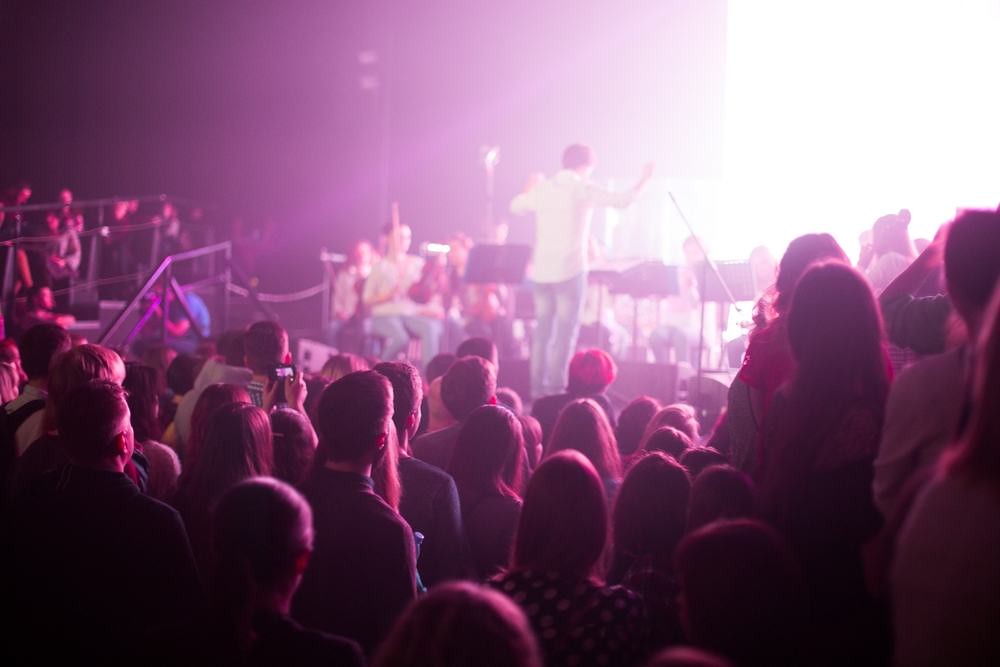 “Audiences differ as much as individuals do.”
“Audiences differ as much as individuals do.”
–The Musician’s Way, p. 209
For musicians, career sustainability hinges on audience development.
When we continually attract new listeners, our revenues grow, and we gain the freedom to fully devote ourselves to our art.
In my work as a career coach and entrepreneurship educator, I use design thinking strategies to help musicians achieve all sorts of goals, including to build new audiences and bolster their incomes.
Design thinking encompasses five components that empower us to identify problems and devise solutions:

Design Thinking for Audience Development
In the context of audience development, design thinking helps performers and arts organizations understand their target audiences, formulate avenues to attract them, and implement appropriate actions. Here’s a concise illustration.
1. Empathize
Pinpoint the target audiences that you’d like to connect with. They might be people in certain age or ethnic groups, from particular locations, or within ranges of personal income.
Next, learn about their interests, their arts consumption habits, their leisure time pursuits, and their motivations and barriers to attend performances.
To that end, explore resources such as the Wallace Foundation library on building audiences for the arts.
Then, you might consult mentors who are familiar with your target audiences, meet with community groups, reach out to religious congregations, conduct online and in-person polls, and access information in archives – public records, for instance, may reveal age distributions and household incomes in distinct neighborhoods.
The central elements at this stage are to construct thoughtful questions, initiate meaningful conversations, and listen.
2. Define the Problem(s)
As you empathize with your target audiences, problem areas will emerge. But the key to finding useful solutions is to define problems precisely.
A study by the League of American Orchestras revealed that first-time orchestra concertgoers who didn’t return cited parking problems as their principal reason for staying away. Musicians can apply that precise finding, ensuring that they not only choose concert venues with ample parking but also communicate parking solutions to prospective listeners.
Whoever your target audiences may be, you’ll probably uncover multiple obstacles to winning their support, some of which you can address and others that you can’t, at least not at first.
Delineate specific problems that are likely to have attainable remedies, focusing on your target audience’s motivations and barriers to attend concerts, and then move on to the ideation phase.
3. Ideate
With definite problems in front of you, employ idea-generation tactics to discern varied solutions – here’s a list of 18 idea-generation techniques.
Straightforward problems, such as parking availability, may be conducive to clear-cut fixes. But other difficulties, among them, financial barriers, may require more complex responses.
No matter, for now, generate copious problem-solving ideas without being critical or concerned about practicality.
4.Prototype
Select a defined issue – or a set of related problems – along with its list of possible responses. Then, choose one solution to prototype.
- Let’s say that your ensemble wants to self-produce concerts in selected regions where people enjoy your style of music and will pay $20-$50 per ticket.
- Your target audience comprises working and retired adults, and you’ve determined in the empathize phase that their concerns include parking, safety, and accessibility for elderly and disabled patrons. You defined those concerns as problems to solve.
- In the ideation phase, you decided that your top strategy would be to choose low-cost but well-regarded venues in safe neighborhoods that meet all of your group’s technical/acoustical needs and have large, well maintained parking lots, easy wheelchair access to the venue and bathrooms, and excellent sight lines for wheelchair-bound listeners.
- Your next task is to research venues that will meet those requirements and then prototype the steps involved in putting on an attractive and profitable concert at one or two of them.
- Then, you’d present one or more prototypes to target audience representatives to get their feedback on your program, venue, communication plan, etc.
With a thornier dilemma – perhaps your target audience lacks the resources to purchase tickets – you might prototype the multi-step processes necessary to put on free events. You’d set a budget, investigate opportune venues, search for non-profit organizations with whom to partner, and map out grant resources.
5. Test
With a prototyped solution in hand that was favorably received by your target audience representatives, your next challenge is to test it in a small but significant way.
If you want to present music for disadvantaged audiences, let’s say, rather than starting a concert series, you might produce a single event and recruit pivotal individuals to attend – people who’d support your expansion and fundraising efforts, if your trial performance proves successful.
* * *
Lastly, let’s acknowledge that musicians don’t solely self-produce concerts; we also seek to win bookings from established concert series.
We can adapt the above illustration to target concert presenters and develop action plans to make presenters want to book us. The 5 steps would be the same, beginning with empathy for the world that presenters occupy, moving on to defining key problems that presenters face, and so forth. I invite you to try it.
Likewise, music teachers can employ design thinking to attract new students. Composers can use it to target potential commissioners and work out strategies to win good-paying commissions.
Whatever our objectives, design thinking provides us with a means to engage productively with professional issues and cultivate lasting music careers.
See the related posts below for more thoughts on programming, funding and marketing performances.
Related posts:
3 Traits of Successful Concert Programs
Artistic Vision
Differentiate or Disappear
Don’t Be a White Egg
Self-Produce Concerts in 8 Steps
© 2017 Gerald Klickstein
Photo © D. Galtsinov, licensed from Shutterstock.com
Design Thinking Diagram: (cc) by Teo Yu Siang and Interaction Design Foundation

